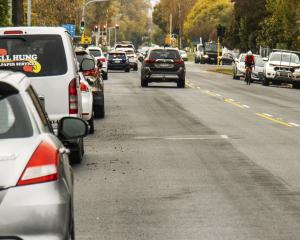Tsunami waves 12m high inundate New Zealand's east coast in a video simulation of what could happen if a "megathrust" earthquake strikes.
University of California Santa Cruz geophysicist Steven Ward said the potential tsunami would hold the equivalent power of 3.6 mega tons of TNT, and waves would strike the east coast within 10 minutes.
Within the hour, waves ranging from 5-12m could strike almost the entire east coast of New Zealand.
Ward created the computer simulation of a magnitude 9 earthquake in the Hikurangi trough, also known as the Hikurangi subduction zone, which lies east of Gisborne and Hawke's Bay.It has been the focus of much international research and is regarded as potentially the largest source of earthquake and tsunami hazards in New Zealand.
People around the world may not have considered New Zealand a "hotbed" of tsunami production, compared to Alaska, Japan or South America, Ward said.
However, New Zealand sits on the boundary of the Pacific and Australian tectonic plates, which move about 4cm a year.
In the south the fault is mostly on land and is a strike-slip type, creating no tsunami hazard, Ward said.
In the north, the fault trends offshore and into thrust type, "where tsunami can be born".
In the simulation, after the earthquake strikes an initial pile of water forms over the offshore uplift, sending half towards land, and the other half to sea.
Within an hour, the massive waves strike the entire east coast of the North Island, and parts of the South Island.
Christchurch would be hit particularly hard, he said.
"Banks Peninsula, near Christchurch, acts like a tsunami magnet. The run-up is amplified there."
"New Zealand hazard planners have their work cut out," he said.
Various studies have been conducted on the Hikurangi subduction zone, and more are under way, as scientists seek to understand more about what many believe has potential to be the country's single biggest geological hazard.
Megathrust earthquakes in subduction zones have been behind some of the world's biggest disasters.
Most recently, they've included the 2011 Tohoku earthquake and tsunami off Japan, which killed nearly 16,000 people, and the 2004 Boxing Day 9.1 quake and tsunami, which killed as many as 280,000.
A Civil Defence and Emergency Management spokesman said such a scenario would be a local source tsunami, for which the "long or strong" messages have been especially designed.
Civil Defence advice tsunami safety advice
If you are near the coast and feel an earthquake that is long and strong, get gone.
If you are at the coast and experience a strong earthquake that makes it hard to stand up, or a weak rolling earthquake that lasts a minute or more, see a sudden rise or fall in sea level, hear loud and unusual noises from the sea, move immediately to the nearest high ground, or as far inland as you can, walk or bike if possible.
Do not wait for official warnings. For a local source tsunami which could arrive in minutes, there won't be time for an official warning. It is important to recognise the natural warning signs and act quickly.












